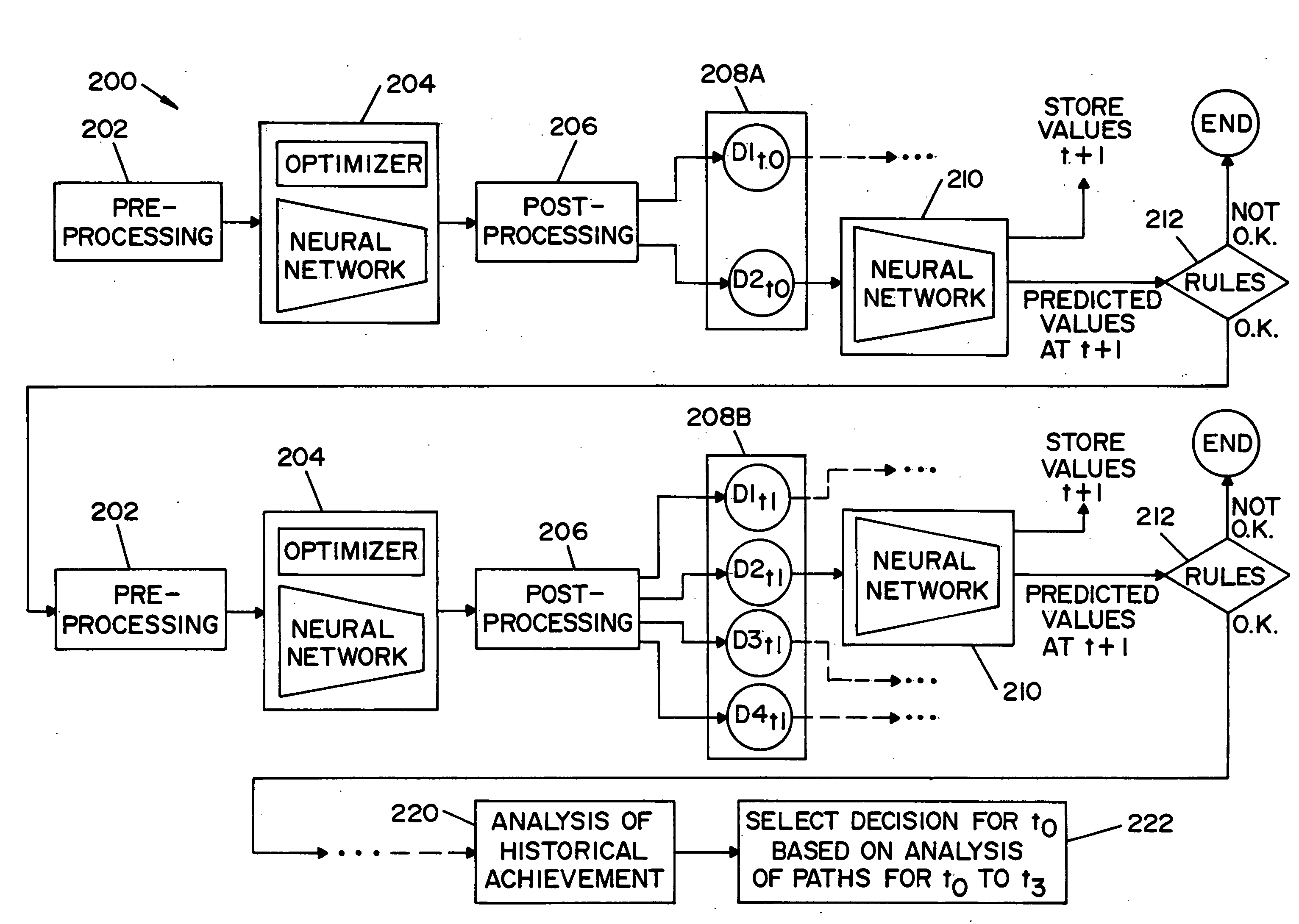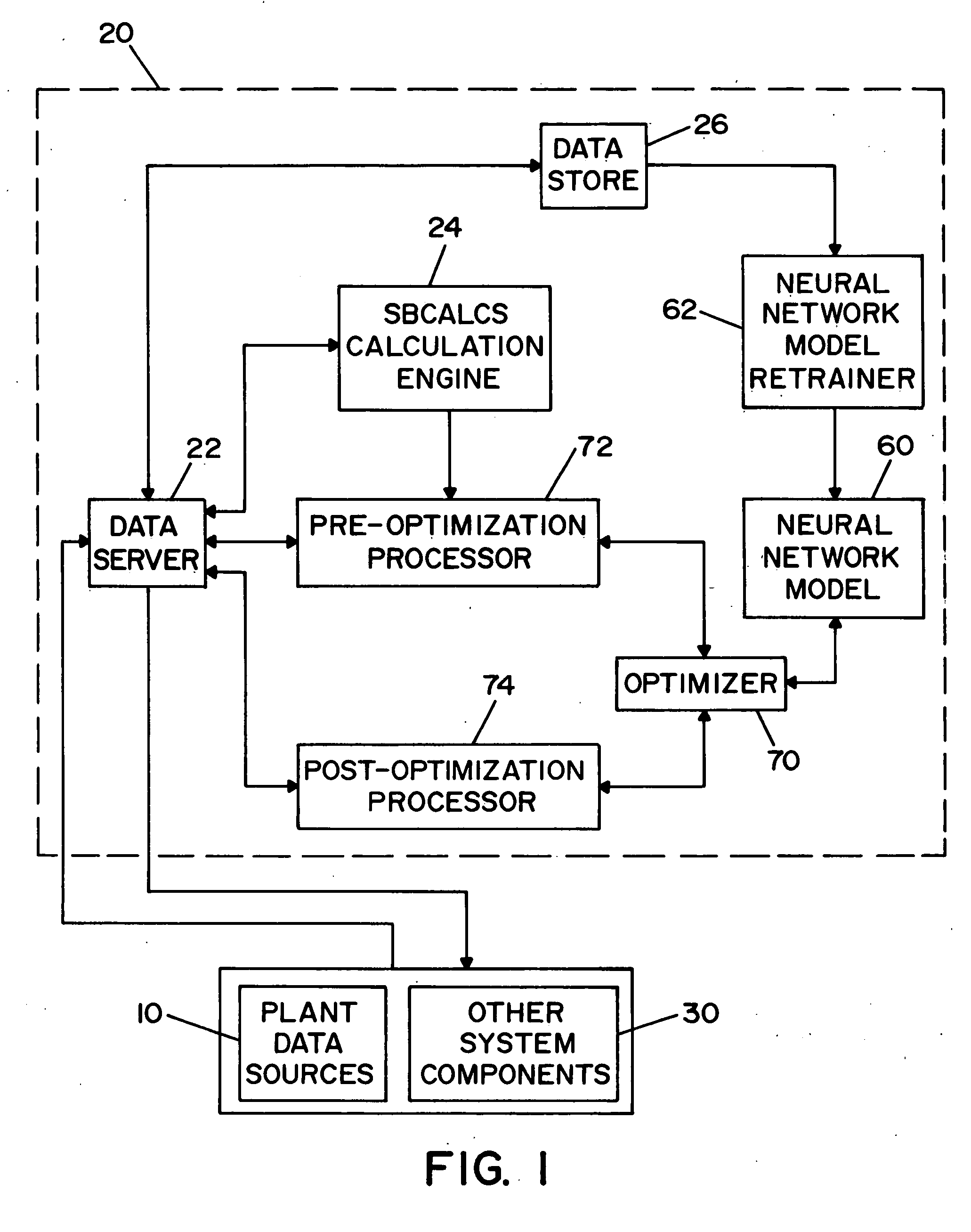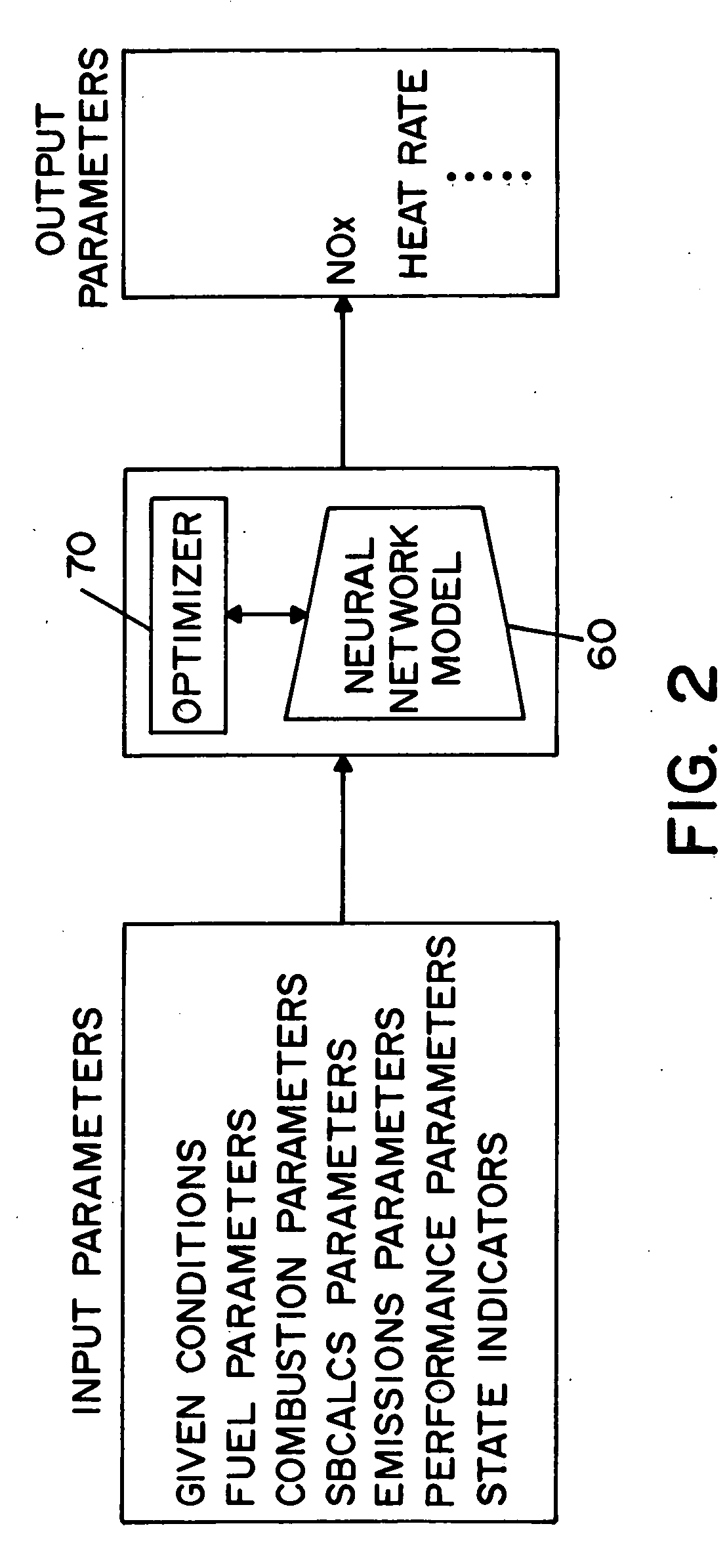Method and apparatus for optimizing operation of a power generating plant using artificial intelligence techniques
a technology of artificial intelligence and power generating plant, applied in adaptive control, process and machine control, instruments, etc., can solve problems such as imbalances in reheat or superheat sections, redistribution/reduction of heat transferred, and heat absorbed across various sections of boilers, so as to achieve optimal performance and improve the accumulation of soot
- Summary
- Abstract
- Description
- Claims
- Application Information
AI Technical Summary
Benefits of technology
Problems solved by technology
Method used
Image
Examples
Embodiment Construction
[0040] It should be appreciated that while an embodiment of the present invention is described herein with reference to a power generating unit that uses coal, the present invention is applicable to boilers used in connection with power generating systems using other combustible fuels and with systems other than power generating units.
[0041] It should also be understood that the various systems described in the illustrated embodiments of the present invention may take the form of computer hardware, computer software, or combinations thereof. The computer hardware may take the form of a conventional computer system including a processor, data storage devices, input devices (e.g., keyboard, mouse, touch screen and the like), and output devices (e.g., display devices such as monitors and printers), or be embodied as part of another computer system.
[0042] The main components of a fossil fuel fired power generating unit will now be briefly described. A typical power generating unit inc...
PUM
 Login to View More
Login to View More Abstract
Description
Claims
Application Information
 Login to View More
Login to View More - R&D
- Intellectual Property
- Life Sciences
- Materials
- Tech Scout
- Unparalleled Data Quality
- Higher Quality Content
- 60% Fewer Hallucinations
Browse by: Latest US Patents, China's latest patents, Technical Efficacy Thesaurus, Application Domain, Technology Topic, Popular Technical Reports.
© 2025 PatSnap. All rights reserved.Legal|Privacy policy|Modern Slavery Act Transparency Statement|Sitemap|About US| Contact US: help@patsnap.com



